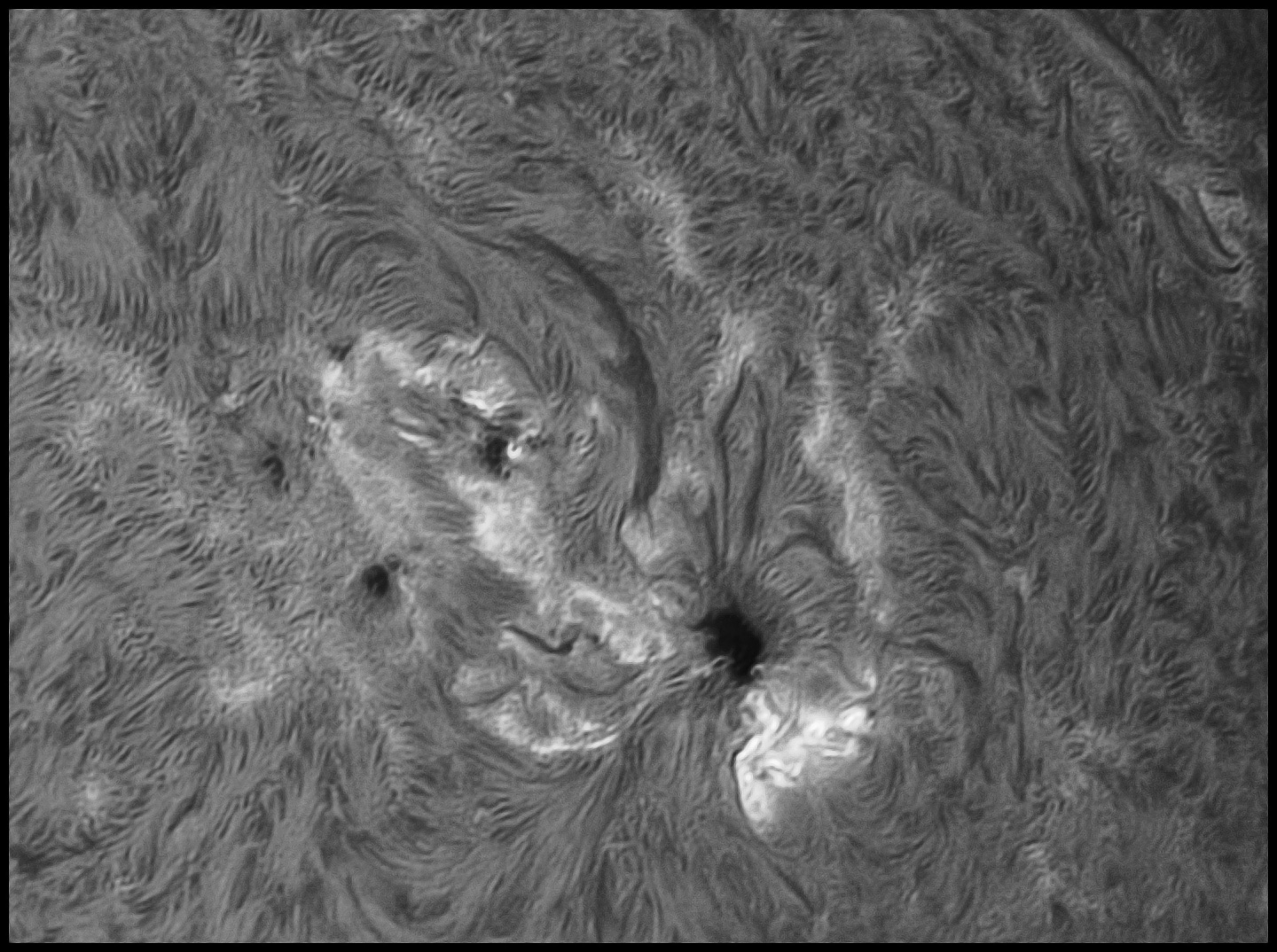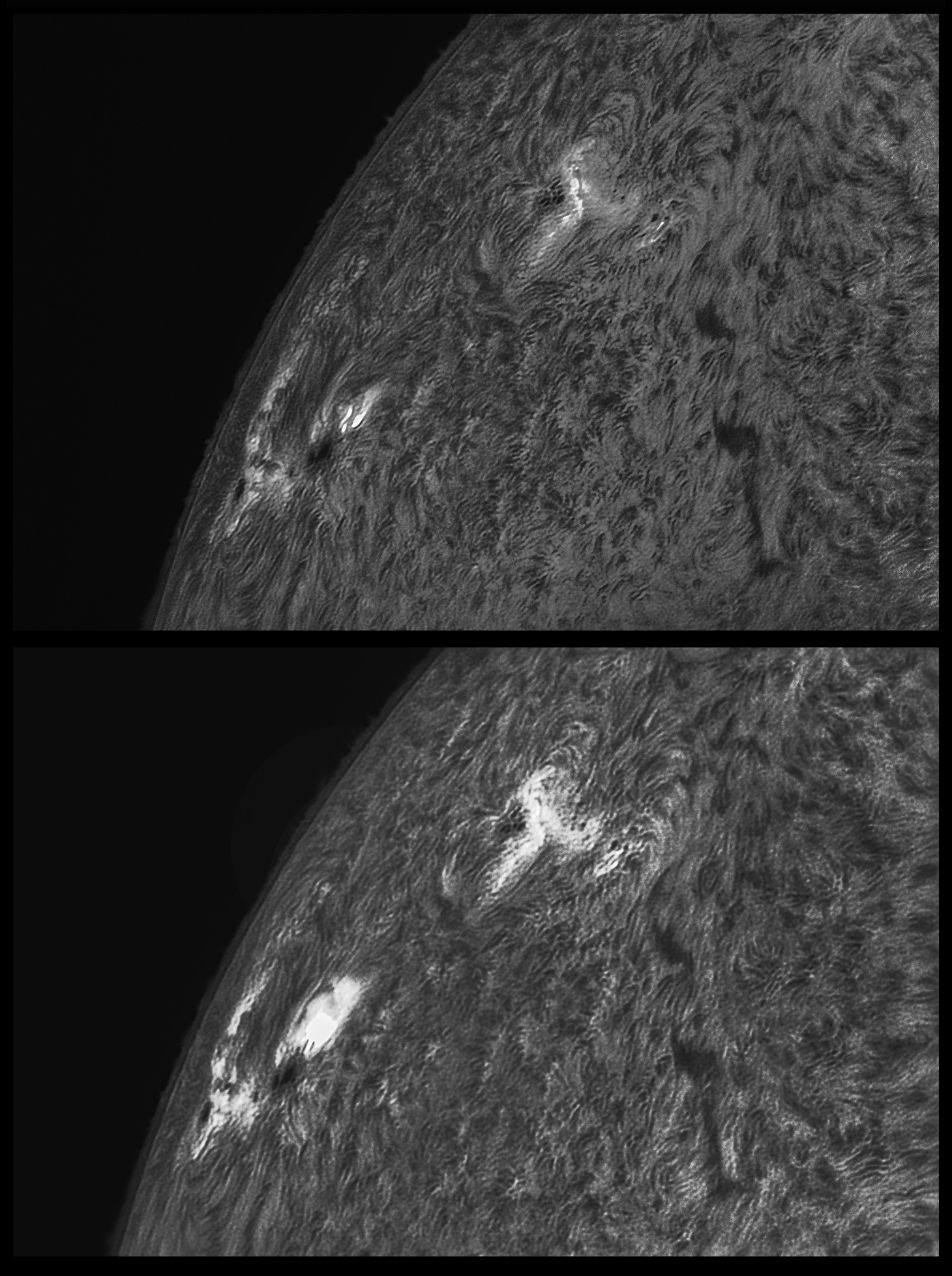Another Sunny Day
07/13/2024. Steady air makes it easy. I stepped outside just to set up the gear to use "soon" and saw a large flare coiling around a sunspot group that seemed quiescent the last time I checked. So I took data for an hour or so. Here's the first cut at the take, but there's more where this came from, to be enjoyed when the weather is awful and no deadlines loom.
Yes, you should definitely make these big.

12x200 frames, best 51 of each clip. 20mm extension, internal compressor. 14-bit, fuill-frame, gamma off. Photomerged w/o assistance.

No compressor. Best 200 of 4,000 frames. ROI about 960x700. Gamma 24.

2x4,000 framec lipes, best 200 of each. Mosaic (top/bottom). Gamma 24. ROI 950x680.
The air was steady except for large, slow seeing off the adjacent rooftop. Typical exposures were in the 1.5ms range, some longer, some shorter. These three were unexceptional, just deep and given to clean, sharp presentation. Today's best closeups came from AS!4 to ImPPG to Photoshop.
Well, wait. Here's the one. Full-sensor, 4000 frames, no gamma, 1.5ms exposures, best 200. Sharpened in ImPPG, once with the histogram isolating the highlights, once for everything else, then added in Photoshop as a kind of 2-stage HDR to try to show big M-class flare wrapping around a small sunspot group. This is how it's suppose to work!
 If you make nothing else big today, click that one.
If you make nothing else big today, click that one.
Today I've adopted a convention of using an "images" directory under the Slowblog folder. By and by, I'll move all the images for these pages into it, bringing them home from their formerly separate hosting account and clearing out the HTML and PHP file lists. It seems worthwhile. I do realize this should mean exactly nothing to you, but I am putting this note right here to remind me to use this new scheme when uploading new photos. Old habits and all that.
07/14/2024. Steady Air, Part Two. Even better air was forecast for today (and tomorrow). Here's some of today's fun.

Best 200 of 5,000 (or was it 10,000? anyway a lot) under good seeing. Last week's main group exiting.

Best 200 of 5,000 times two (top/bottom). Same AR as yesterday's HDR but without major flares.

The difference seven minutes make: two flares in a new AR just coming around the limb.

12-frame full-disk mosaic, gamma disabled. Best 50 frames from 200 for each panel. It's dark for a reason: there are a lot flare-producing regions here that I don't want getting lost in the light.
Full-disk mosaics are almost casual provided you've internalized a few key items:
- Use the snout with the internal Antares 0.5x compressor and a 20mm extension.
- Make sure the RA/Dec motions align with the frame X:Y axes and that the long axis of the sensor runs E/W.
- Take a defocused Sun-centered flat with gamma off.
- Focus with gamma on and adjusted for maximum contrast.
- Turn gamma off.
- Start with the east limb, and do four captures to from N to S or S to N after insuring that you will get some clearance at the easternmost point of the Sun.
- Use the 12x tracking rate to slew to the next row of images. It's four up and down, three across.
- Give the mount time to settle before hitting 'capture.'
Today's full-disk image felt very easy, possibly just because I was in practice.
:: top ::